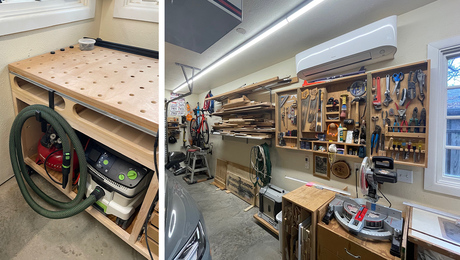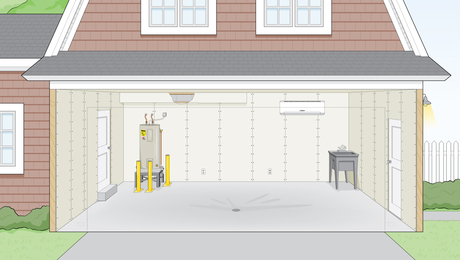Q:
My 6-year-old concrete driveway is poured over a gravel base in 12-ft. by 12-ft. sections separated by 1/2-in. felt isolation joints.
Paul Johnson, via email, None
A:
Paul Fisette, building-materials and wood-technology director at the University of Massachusetts, replies: Let’s start with the good news first. Your driveway has been stable for a couple of years, and in spite of the increased gap that has grown between two sections, you don’t have any random cracks. This evidence would indicate that the gravel base is working well.
It’s standard practice to pour a concrete driveway in a series of slabs or panels that are supposed to function independently. That’s why the gaps between panels are called isolation joints. These joints start out uniform in width, but it’s not unusual for some shifting to occur. It’s likely that the level slab has remained stationary and that the sloping one has moved slightly downhill.
Your best strategy at this point is to stabilize the slab by removing the old felt from the joints and filling the resulting space with a high-grade filler. The filler will help to minimize the amount of water that gets through the joints and travels under the panels, where it can freeze and then heave the concrete.
Polyurethane joint sealant like the material that is used in highway-pavement joints works well in this regard. Sonneborn NP 1 (800-433-9517; www.chemrex.com) is a good choice in this situation.
After removing felt from the joints, sweep them clean with a wire brush. Force a closed-cell backer rod into each joint. Backer rods in different sizes are available from sealant suppliers. Position each rod so that the sealant that covers it will not be more than 1/2 in. thick. After fitting the backer rod in place, blow out each joint with compressed air. If this isn’t possible, you can clean the joint with a shop vacuum.
The sealant comes in caulking tubes, so it can be gunned into each joint. If you want a self-leveling product, use Sonneborn SL 1. These sealants sell for about $4 a tube. Each tube will fill about 2 ft. of a recess 1/2 in. deep by 1-1/2 in. wide.

























